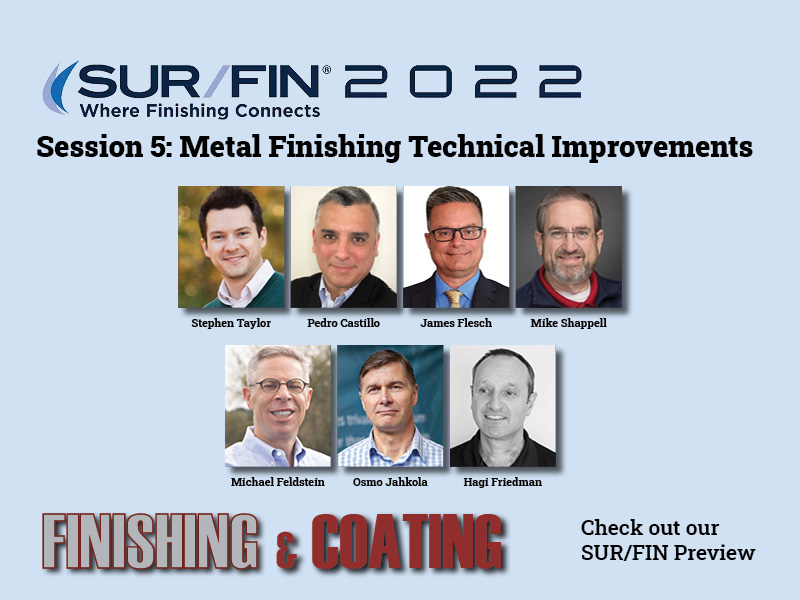Session 5 at the NASF SUR/FIN Technical Conference will be on “Advancements in Metal Finishing Technical Improvements.”
Here are the abstracts for the presentations on June 7. Please visit www.nasfsurfin.com for information on registering for the event:
Session 5: Advancements in Metal Finishing Technical Improvements
Session Chairs Rob Pawson, Haviland USA, and George Milad, Uyemura
1:30 – 2:00: In-House Chemical Paint Removal – the Ideal Choice for Hook and Rack Cleaning — Stephen Taylor, Atotech USA
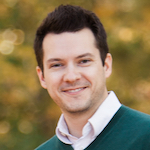 Stephen TaylorA necessary inconvenience of all paint applications is the eventual requirement to remove the cured paint from part racks, hooks, and fixtures. Ensuring proper contact between the part and its fixture is paramount in achieving a quality paint finish, and as cured paint builds up on fixtures, the area of contact becomes narrower and proper part racking becomes more difficult. The only way to continuously ensure the highest paint transfer efficiency and minimize part defects is to remove the cured paint. Traditionally, this paint removal is achieved by one of three methods: mechanical, thermal, and chemical. Due to the hazards of these conventional methods, paint applicators often outsource their paint removal demands; however, safe, economical, and sustainable in-house paint removal for ferrous, non-ferrous, and multi-metal applications can be achieved – with some applications being suitable for in-line removal. This presentation will explore how this is possible, by highlighting the high efficiency potential of a new chemical approach.
Stephen TaylorA necessary inconvenience of all paint applications is the eventual requirement to remove the cured paint from part racks, hooks, and fixtures. Ensuring proper contact between the part and its fixture is paramount in achieving a quality paint finish, and as cured paint builds up on fixtures, the area of contact becomes narrower and proper part racking becomes more difficult. The only way to continuously ensure the highest paint transfer efficiency and minimize part defects is to remove the cured paint. Traditionally, this paint removal is achieved by one of three methods: mechanical, thermal, and chemical. Due to the hazards of these conventional methods, paint applicators often outsource their paint removal demands; however, safe, economical, and sustainable in-house paint removal for ferrous, non-ferrous, and multi-metal applications can be achieved – with some applications being suitable for in-line removal. This presentation will explore how this is possible, by highlighting the high efficiency potential of a new chemical approach.
2:00 – 2:30: Impact of Transformation Technologies 4.0 in the Surface Finishing Industry — Pedro Castillo, Therma-Tron-X
 Pedro CastilloThis session will discuss the impact that disruptive transformation technologies 4.0 bring to the surface finishing industry and the effects on operations, commercial efforts, competitiveness, economic life of capital equipment, organizational culture, governance, education, IT security, among other perspectives. The advance of disruptive technologies at a global level, reflected daily in our homes, leads us to accept that a hasty technological evolution is inevitable. Successful cases require that an aligned business strategy must be in place, an adequate continuous improvement plan, in addition to maintain a positive attitude towards these changes, so these technologies can be fully exploited and ensure that its true added value can be used to its fullest extent. This session will also talk about the metrics that must be considered, the myths, the Top Management questions regarding these initiatives, the impacts on the industry, effects on the organizational culture, the technical and business knowledge requirements to be able to adopt them successfully, among other topics. Food-for-thought and call-to-action to adopt disruptive technologies 4.0, but especially a call to analyze what is the ideal scenario with tangible results.
Pedro CastilloThis session will discuss the impact that disruptive transformation technologies 4.0 bring to the surface finishing industry and the effects on operations, commercial efforts, competitiveness, economic life of capital equipment, organizational culture, governance, education, IT security, among other perspectives. The advance of disruptive technologies at a global level, reflected daily in our homes, leads us to accept that a hasty technological evolution is inevitable. Successful cases require that an aligned business strategy must be in place, an adequate continuous improvement plan, in addition to maintain a positive attitude towards these changes, so these technologies can be fully exploited and ensure that its true added value can be used to its fullest extent. This session will also talk about the metrics that must be considered, the myths, the Top Management questions regarding these initiatives, the impacts on the industry, effects on the organizational culture, the technical and business knowledge requirements to be able to adopt them successfully, among other topics. Food-for-thought and call-to-action to adopt disruptive technologies 4.0, but especially a call to analyze what is the ideal scenario with tangible results.
2:30 – 3:00: Lessons from the Field for Process Control of the Acid Zinc-Nickel Plating Operation — James Flesch, Dipsol of America
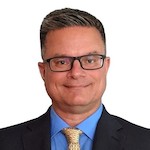 James FleschSince the development of the acid zinc nickel process, the knowledge gained from technical support activities in the field has reinforced the importance of implementing best practices for optimizing the various parameters present in barrel or rack applications. Foregoing these practices for controlling and maintaining the process will have a negative impact on the costs of operation and yield inconsistent product from the plating line. Some case studies will be presented to give a more thorough understanding of how integrating these practices will result in decreasing excessive chemical consumption, part nonconformities, and other related inefficiencies in the overall production process.
James FleschSince the development of the acid zinc nickel process, the knowledge gained from technical support activities in the field has reinforced the importance of implementing best practices for optimizing the various parameters present in barrel or rack applications. Foregoing these practices for controlling and maintaining the process will have a negative impact on the costs of operation and yield inconsistent product from the plating line. Some case studies will be presented to give a more thorough understanding of how integrating these practices will result in decreasing excessive chemical consumption, part nonconformities, and other related inefficiencies in the overall production process.
3:00 – 3:30: From Manual to Automation Within the Surface Finishing Industry — Mike Shappell, Norton/Saint-Gobain Abrasives
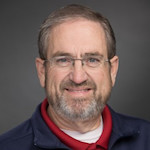 Mike ShappellFor many years the goal of most surface finishing operations has been to reduce or eliminate the dependency of using hand finishers for the majority of their processes. There are many challenges to achieve this goal, from finding the right pieces of equipment, whether it’s robotics or fixed automation to achieve this, to finding ways to match that equipment to the right abrasive process and products. Often times the surface finishing group tries to just “duplicate” what they do by hand to something that can be done with a robot or fixed automation. While this is sometimes possible, it often leaves very little improvement and thus, makes automation payback a real challenge. One of the challenges of the surface finishing industry is to help the end users find more creative and efficient ways to run their parts, using new or improved abrasives and processes, to not just duplicate the current method, but to improve it. The job of the Norton/Saint-Gobain World Class Abrasive Process Solutions Robotic Lab system is to not only discuss how we can help the surface finishing industry achieve a new level of automation but to be able to show them these improvements. The APS System is set-up to show grinding, Heavy Polishing, Surface polishing and finishing, brushing and surface buffing processes, on customer parts, on a real life robotic based automated system. The APS system is designed for not only part to abrasive set ups, but also, abrasive to part processes. These processes are also set up to be able to show this on dry processes and wet processes. The SUR/FIN presentation will show details of how this can be achieved and how SUR/FIN attendees can set up plans to have their parts run on the Norton/Saint-Gobain Abrasive Process Solutions system.
Mike ShappellFor many years the goal of most surface finishing operations has been to reduce or eliminate the dependency of using hand finishers for the majority of their processes. There are many challenges to achieve this goal, from finding the right pieces of equipment, whether it’s robotics or fixed automation to achieve this, to finding ways to match that equipment to the right abrasive process and products. Often times the surface finishing group tries to just “duplicate” what they do by hand to something that can be done with a robot or fixed automation. While this is sometimes possible, it often leaves very little improvement and thus, makes automation payback a real challenge. One of the challenges of the surface finishing industry is to help the end users find more creative and efficient ways to run their parts, using new or improved abrasives and processes, to not just duplicate the current method, but to improve it. The job of the Norton/Saint-Gobain World Class Abrasive Process Solutions Robotic Lab system is to not only discuss how we can help the surface finishing industry achieve a new level of automation but to be able to show them these improvements. The APS System is set-up to show grinding, Heavy Polishing, Surface polishing and finishing, brushing and surface buffing processes, on customer parts, on a real life robotic based automated system. The APS system is designed for not only part to abrasive set ups, but also, abrasive to part processes. These processes are also set up to be able to show this on dry processes and wet processes. The SUR/FIN presentation will show details of how this can be achieved and how SUR/FIN attendees can set up plans to have their parts run on the Norton/Saint-Gobain Abrasive Process Solutions system.
3:30 – 4:00: State of the Electroless Nickel Industry — Michael Feldstein, Surface Technology
 Michael FeldsteinIn these unprecedented times, there are challenges as well as opportunities in the electroless nickel industry. Challenges include: supply chain disruptions, shortages of key commodities nickel sulfate and sodium hypophosphite, high energy costs, increased regulations, inflation, and high shipping costs. Opportunities include: interest in on-shoring manufacturing, vibrant industry organizations, MAMF scholarships, Products Finishing magazine programs to support the EN industry, educational programs for EN, and new technologies for improved performance, savings, safety, compliance. Michael Feldstein will present these challenges and opportunities in detail. He has a unique perspective on the EN industry as the President and Director of Innovation at Surface Technology, Inc which has served the EN industry for nearly 50 years as both a manufacturer of EN solutions as well as a plating job shop, named the 2021 Top Shop plating shop according to Products Finishing magazine.
Michael FeldsteinIn these unprecedented times, there are challenges as well as opportunities in the electroless nickel industry. Challenges include: supply chain disruptions, shortages of key commodities nickel sulfate and sodium hypophosphite, high energy costs, increased regulations, inflation, and high shipping costs. Opportunities include: interest in on-shoring manufacturing, vibrant industry organizations, MAMF scholarships, Products Finishing magazine programs to support the EN industry, educational programs for EN, and new technologies for improved performance, savings, safety, compliance. Michael Feldstein will present these challenges and opportunities in detail. He has a unique perspective on the EN industry as the President and Director of Innovation at Surface Technology, Inc which has served the EN industry for nearly 50 years as both a manufacturer of EN solutions as well as a plating job shop, named the 2021 Top Shop plating shop according to Products Finishing magazine.
4:00 – 4:30: New Triplehard Coating – A Cost Efficient and Sustainable Alternative to Cr(Vi) and Beyond — Osmo Jahkola, Savroc
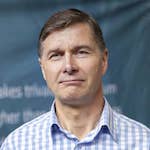 Osmo JahkolaTripleHard is a new generation hard chrome plating technology that works in a very wide range of applications. The sustainable trivalent chrome process is 100% chromic and boric acid free and meets health and environmental regulations. TripleHard coating performance has been proven by successful applications in industrial plating processes. According to various customers' tests, it is the best ever tested hard chrome plating technology. This advantaged plating technology is not only a replacement for toxic hexavalent chromium, but also for significantly more expensive plating technologies like thermal spraying and physical vapor deposition. Thanks to an extremely high plating rate, TripleHard provides plating companies and end users with significant savings.
Osmo JahkolaTripleHard is a new generation hard chrome plating technology that works in a very wide range of applications. The sustainable trivalent chrome process is 100% chromic and boric acid free and meets health and environmental regulations. TripleHard coating performance has been proven by successful applications in industrial plating processes. According to various customers' tests, it is the best ever tested hard chrome plating technology. This advantaged plating technology is not only a replacement for toxic hexavalent chromium, but also for significantly more expensive plating technologies like thermal spraying and physical vapor deposition. Thanks to an extremely high plating rate, TripleHard provides plating companies and end users with significant savings.
4:30 – 5:00: New Approach in Surface Coating Production Lines — Hagi Friedman, Enwize T.W.
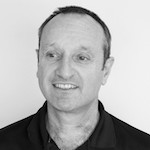 Hagi FriedmanThe manufacturing maintenance ecosystem incorporates solutions for maintenance resources management using various systems. Industry 4.0 added automation to manufacturing world. It automates machines, it optimizes maintenance scheduling according to equipment actual performance rather than maintenance scheduling according to OEM directions. But when it comes to actual hands-on operation and maintenance tasks on production floor, these are yet based on documented procedures (word, excel, etc.) and gained knowhow of workers. Feedback from production floor is based on manual reports, often divided to several reporting forms (procedure execution, spare parts, Job Safety Analysis etc.). Furthermore – it doesn't include knowhow and techniques sharing for improved performance. This results in ever growing gap between the documented data and actual knowhow required for correct and efficient job performance. It leads to increased equipment downtime, increased operation costs and risk to equipment and personnel. In the presentation, I will propose a new approach to manufacturing maintenance and operation management ecosystem - incorporating a new management layer - Maintenance operations management. The maintenance operations management creates a new cycle of information and dataflow between the organization database and the production floor and maintenance resources management. First level, it shall equip the production floor with most updated and detailed data, provided by AR/VR visual tool that ensures correct execution of preventive and corrective maintenance procedures. Second level, it generates digital operations environment that enables to manage operations on production floor based on digital data. Third level, it ensures automatic feedback and reports from the production floor to the database that enables accurate performance monitoring and analysis. Fourth level it incorporates AI decision making based on the actual data that is automatically reported. This new approach can dramatically reduce downtime and operational costs (by 30% according to our gained experience), and it can lead to safer working environment.
Hagi FriedmanThe manufacturing maintenance ecosystem incorporates solutions for maintenance resources management using various systems. Industry 4.0 added automation to manufacturing world. It automates machines, it optimizes maintenance scheduling according to equipment actual performance rather than maintenance scheduling according to OEM directions. But when it comes to actual hands-on operation and maintenance tasks on production floor, these are yet based on documented procedures (word, excel, etc.) and gained knowhow of workers. Feedback from production floor is based on manual reports, often divided to several reporting forms (procedure execution, spare parts, Job Safety Analysis etc.). Furthermore – it doesn't include knowhow and techniques sharing for improved performance. This results in ever growing gap between the documented data and actual knowhow required for correct and efficient job performance. It leads to increased equipment downtime, increased operation costs and risk to equipment and personnel. In the presentation, I will propose a new approach to manufacturing maintenance and operation management ecosystem - incorporating a new management layer - Maintenance operations management. The maintenance operations management creates a new cycle of information and dataflow between the organization database and the production floor and maintenance resources management. First level, it shall equip the production floor with most updated and detailed data, provided by AR/VR visual tool that ensures correct execution of preventive and corrective maintenance procedures. Second level, it generates digital operations environment that enables to manage operations on production floor based on digital data. Third level, it ensures automatic feedback and reports from the production floor to the database that enables accurate performance monitoring and analysis. Fourth level it incorporates AI decision making based on the actual data that is automatically reported. This new approach can dramatically reduce downtime and operational costs (by 30% according to our gained experience), and it can lead to safer working environment.





